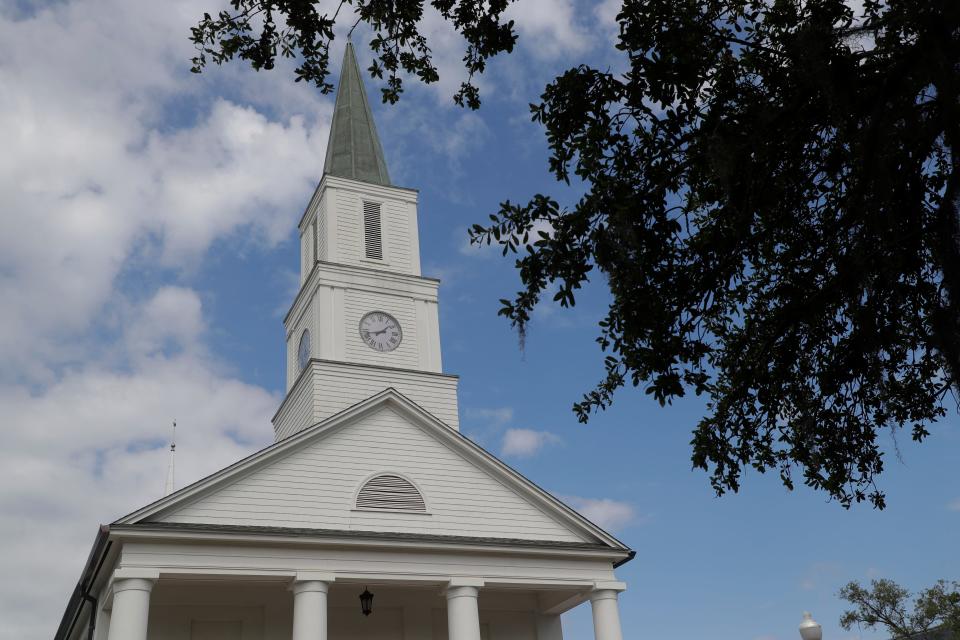Tallahassee got off to confusing Daylight Saving Time start in 1918
On Tuesday, March 19, 1918, in the middle of World War I, President Woodrow Wilson signed into law Daylight Saving Time which took effect on March 31.
Referred to as “fast time” or “war time,” Daylight Saving Time (DST) required households to set their clocks forward one hour on the last Sunday in March and then turn them back one hour on the last Sunday in October.
The primary reasons for the bill were to make better use of natural light to increase the length of the working day; save on “illuminants” like oil and gas; conserve coal, especially during the winter months; and improve training conditions for America’s fighting forces.
Star watching:March skies brighten with spring equinox, Daylight Saving Time | The Sky Guy
Dining with a view:16 of our favorite waterfront restaurants around the Panhandle and Forgotten Coast
This year, Daylight Saving Time begins Sunday, March 12.
Promoters of DST touted that the additional hour of daylight would give people more time outdoors for gardening or recreational purposes, which would be a boon to national health.
According to news reports, the time change would not cause “the slightest disorganization or impairment of existing conditions” in daily life. On Saturday night, March 30, every household would simply set its clock “forward one hour, go to sleep,” and forget about Daylight Saving Time until the last Saturday in October.
Apparently, folks in Tallahassee and Leon County offered few or no complaints; at least, none were reported in the Daily Democrat.
At the time the bill became law, the line separating the Eastern and Central Time Zones followed Longitude 83 through Detroit, Live Oak, Florida, and south through the Gulf of Mexico just west of Tampa. This placed Leon County in the Central Time Zone.
However, the boundaries complicated the schedules of transcontinental railroads, so, at the recommendation of the Inter-State Commerce Commission, they were redrawn and moved slightly westward.
The new line between the two zones would run through Franklin, North Carolina; Atlanta, Macon, Americus, Albany, and Thomasville, Georgia; and in Florida, through River Junction (Chattahoochee) and down the Apalachicola River to the Gulf. This meant that all Florida counties, including Leon, east of the Apalachicola River, would belocated in the Eastern Time Zone.
Meanwhile, it also meant that Leon and other counties previously in the Central Time Zone would be an hour behind those with whom they now shared the Eastern zone.
Wise heads proffered that the situation could be rectified if folks in that part of Florida did not turn their clocks back an hour in October 1918, but did move them ahead one hour on March 31, 1919.
The new boundaries went into effect on Jan. 1, 1919, but even after March 31 some in Tallahassee, including the City Council, still remained on Central Time. Mayor Guyte B. McCord declared the situation had the town in a state of utter confusion. Some businesses, offices, and the trains passing through Tallahassee, “used one time,” andother residents and businesses used another.

Even the “city time piece” appeared to be confused; on April 2, the Democrat reported that the town clock struck seven when it was only two in the afternoon.
On April 12, McCord and the City Council concluded that the only way to solve the dilemma was for everyone in Tallahassee to observe only “one time.”
On April 14, 1919, the mayor issued a Proclamation declaring that Tallahassee was officially in the Eastern Time Zone, and from “twelve o’clock noon” that day the city would recognize only “Eastern Time Zone Day Light Saving Time” as the “official time” in Tallahassee.
Mary Cathrin May is a former teacher and Tallahassee historian.
This article originally appeared on Tallahassee Democrat: Tallahassee got off to confusing Daylight Saving Time start in 1918

